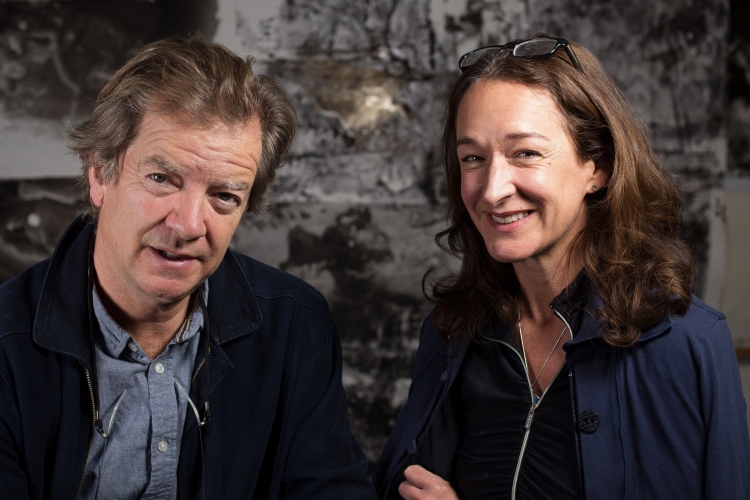
By
Ireland’s forthcoming centenary of the 1916 Easter Rising – a pivotal event in modern Irish history – is a cause for commemoration, and also raises some compelling questions, according to Seelig Professor in Philosophy Richard Kearney.
“How do we tell the difference between memories that incarcerate and memories that emancipate? How do we reclaim the proclamations of 1916?”
Kearney poses this query in a multimedia performance on which he collaborated with Associate Professor of Fine Arts Sheila Gallagher. “Twinsome Minds: Recovering 1916 in Images and Stories” was commissioned and supported by, and will premiere at, Dublin’s renowned Abbey Theatre this coming Jan. 23.
The original work is part of the Ireland 2016 Centenary Programme, which will feature diverse events to mark the 1916 Easter Rising.
“It was a real incentive and inspiration for us to be invited to do this by the national theater of Ireland,” said Kearney – writer, performer and co-director for “Twinsome Minds” – who has served as cultural organizer of several international projects. He and Gallagher, who serves as creative director and performer, worked together on the script and accompanying screen-projected images.
They received $15,000 in support from “Culture Ireland” as part of the Ireland 2016 Centenary Programme, to fund an international tour of “Twinsome Minds” following its debut. Performances will be given in a dozen venues in the United Kingdom, Europe and major cities in the US, including in Boston on April 29.
Through an interplay of storytelling, animation, music and poetry, “Twinsome Minds” – which takes its title from a phrase in the novel Finnegans Wake – mines what is often lost behind official historical accounts and acts of commemoration, according to its creators, and proposes a transformative work of interpreting the Rising for a new generation, according to Kearney and Gallagher.
Audiences, Kearney hopes, will take away “a new sense of the unfinished stories and promises of 1916 as well as a sense of solidarity with both the Irish who died in Dublin during Easter week and in the fields of Flanders wearing British uniforms.”
“Twinsome Minds,” according to a performance description, “re-imagines a series of micro-narratives surrounding 1916 in Dublin and the battlefields of Belgium during World War I. These stories and images of eclipsed history concentrate on ‘twinned’ pairs – family members, neighbors, school friends, lovers – who ended up on opposite sides during this time of great upheaval in British-Irish relations. The scenes explore crossings of memory and imagination, anecdote and legend, history and myth – as well as loyalty and love.”
“I hope the audience comes away with a more nuanced understanding of 1916 and a more inclusive interpretation of the foundational story of the modern Irish state,” said Gallagher, an interdisciplinary artist and curator. “We hope to offer an imaginative alternative to triumphalist (and boring) military reenactments and partisan positioning, one that nudges towards a collective empathy.
“The decade of centenaries is highly charged in Ireland,” she added. “Everyone is wondering whether the commemorations will heal the scars of a contested history or open the wounds of a fragile peace. I feel it is both a huge honor and incredible responsibility to present a multimedia performance that is ‘good commemoration,’ one that is grounded in historical facts, but also expansive and imaginative and can offer fresh insights.”
“Twinsome Minds” features original music composed and performed by Dana Lyn; musical direction by WGBH-FM radio host Brian O’Donovan, technical direction by Kevin Sweet and creative consultation by Professor of the Practice of History Robert Savage, Fanny Howe and Roy Foster. The Abbey Theatre provided $8,000 to fund the original music score and other production expenses.
For details on the 2016 Ireland Centenary Program, see www.ireland.ie/#ireland2016.



